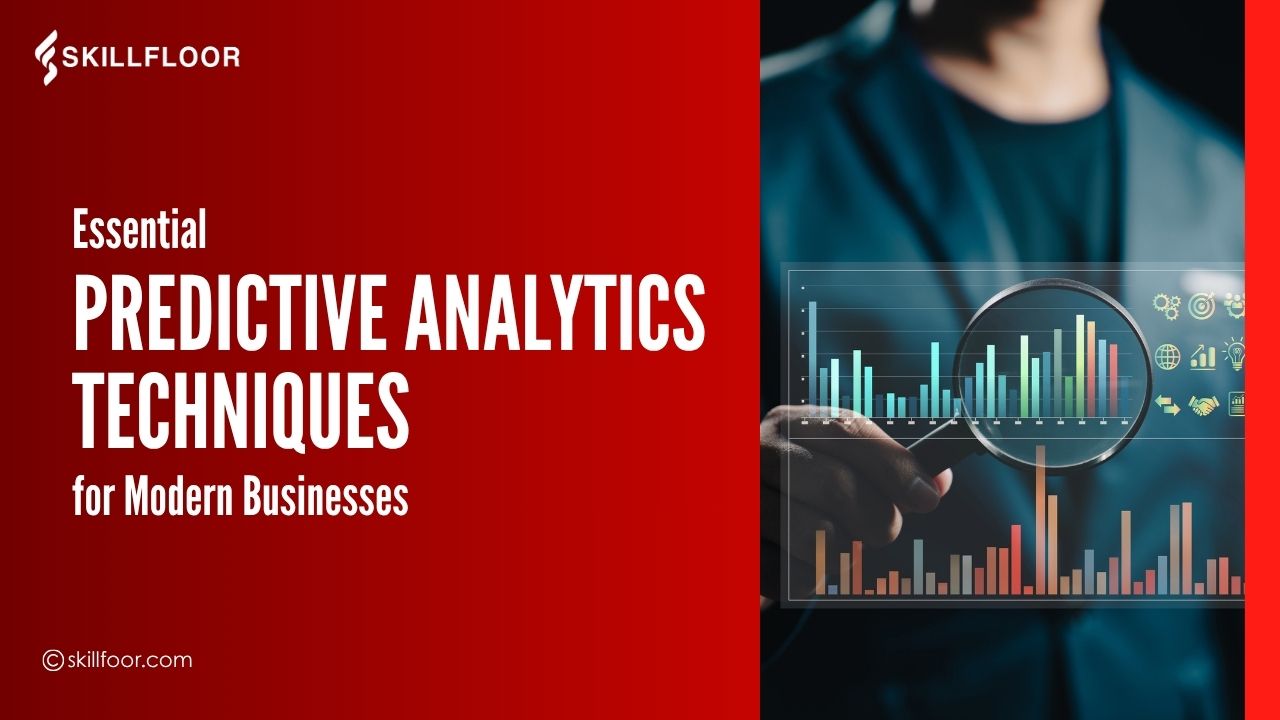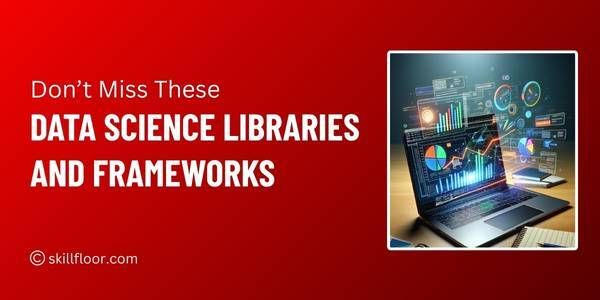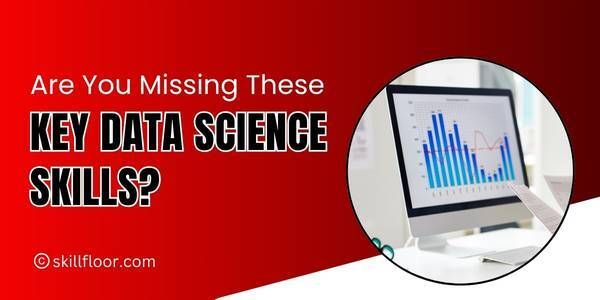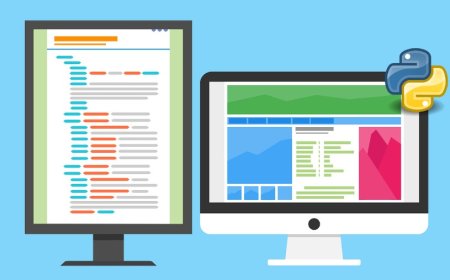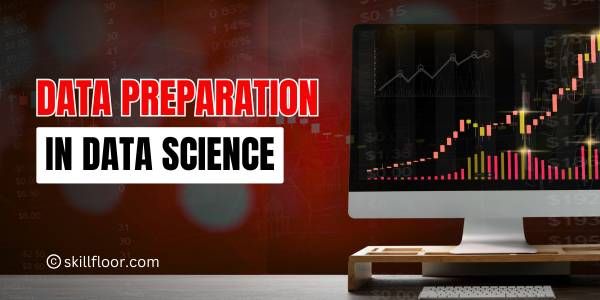Understanding Data Science for Finance
Explore how data science transforms finance through analysis, forecasting, and risk management to drive smarter decisions and strategies.

Do you ever find yourself unable to understand the true meaning of a large number of data? You’re not by yourself. "I see the data, but I'm not sure what to do with it," one financial employee told me. This is where data science for finance comes in; it gradually helps make sense of everything.
Many workers in the banking industry nowadays utilize data to help them make better decisions. Guessing is no longer enough. Learning to comprehend and apply data is now a crucial ability for everyone dealing with money, according to reputable organizations like CFA and Deloitte.
To begin, you don't have to know everything. Anyone can learn with the correct guidance and a little practice. There are no fancy terms or pressures, just straightforward instructions in this tutorial. Just genuine assistance to boost your confidence when working with data.
What is Data Science?
Data science is a method for understanding and learning from data and figures. It assists people in answering questions, identifying trends, and making wise decisions. To put it simply, it's about transforming jumbled data into trustworthy, understandable information.
People apply data science in a variety of fields, including finance, business, and health. It assists in determining what is, is not, and what may occur next. Using it doesn't need you to be an expert in arithmetic; all you need is curiosity and a willingness to learn.
The Expanding Role of Data Science Across Industries
-
Healthcare: Data in healthcare helps physicians in identifying illness early, monitoring patient progress, and selecting the best course of treatment. Through improved planning, it helps hospitals function more efficiently, makes health decisions more intelligent, and saves more lives.
-
Farming: Data is used in agriculture to help farmers choose when to plant, water, or harvest crops. It preserves the land and soil while reducing waste, saving time, and assisting in the production of more food.
-
Retail: Retail establishments utilize data to determine what customers purchase and when. This enables companies to provide customers with a better, quicker, and more individualized shopping experience, as well as to provide attractive bargains and stock wisely.
-
Sports: Data is used by sports teams to monitor athletes, enhance training, and better prepare for games. In addition to helping players provide their best effort in every game, it assists coaches in making wise decisions.
-
Transport: Businesses may locate faster routes, steer clear of congested areas, and use less fuel when they use data in transportation. Every day, it makes deliveries on time, saves money, and facilitates safer and quicker travel.
-
Finance: Data science impacts how people manage finances, research trends, and lower risks in the financial industry. It facilitates improved decision-making for both individuals and enterprises, provides clear market views, and helps in astute planning.
The Fundamental Components of Data Science
-
Data Collection: This is where we start the information gathering process. Websites, polls, applications, or machines—anything that gives us more information about people or things—can provide it.
-
Data Cleaning: Often, raw data contains errors or missing information. Correcting mistakes, completing gaps, and ensuring that the data is accurate and prepared for use in making informed decisions are all examples of cleaning.
-
Data Exploration: In order to identify patterns or trends, we examine the data here. Our understanding of what is happening and what may be significant or unexpected is aided by basic charts and graphs.
-
Data Analysis: At this level, we use numbers to answer questions. We analyze the data and look for hints that might help individuals or organizations make better decisions using simple math.
-
Data Modeling: We create basic rules or systems that can predict potential outcomes. These models assist us in planning, problem-solving, and concept testing without relying solely on conjecture.
-
Data Sharing: Once the solutions have been determined, we clearly display them using charts or brief remarks. This enables others to comprehend what we have learnt and apply it to behave confidently.
What is Data Science in Finance?
Data science in finance refers to the use of data and figures to gain a better understanding of money. It helps consumers and businesses understand the real situation of investing, saving, spending, and other activities. Data may be used to identify potential opportunities and danger areas with the correct tools.
To put it simply, it transforms unorganized financial records into valuable data. To make better decisions, banks, companies, and even small investors use it. People may feel more confident about their financial actions by using data science to provide clear answers for anything from budgeting to identifying fraud.
The Growing Importance of Data Science in Modern Finance
-
Better Decision Making: Financial analysts may make better decisions with the use of data. They may improve their planning, make smaller errors, and feel more secure about their financial decisions by looking at trends.
-
Saving Time and Effort: Tools can rapidly display the most important data rather than manually verifying figures. As a result, more time will be spent on activities that actually benefit the company rather than speculating.
-
Clearer Risk Checks: Data indicates early warning flags. Improved tracking helps businesses stay out of trouble and save money. In a financial environment that is always evolving, this keeps consumers and companies secure.
-
Smarter Spending and Saving: Effective use of numbers can help people manage their budgets more effectively. It assists in identifying waste and presents fresh opportunities for expansion or cost savings.
-
Improved Results Through Patterns: Financial analysis assists in transforming historical data into valuable insights. This helps create better strategies for the future by highlighting what has and has not worked in the past.
-
Trustworthy Planning for the Future: Banks and businesses may predict future requirements, anticipate market shifts, and plan more intelligently to remain resilient even during difficult times with the correct financial research.
Core Applications of Data Science in Finance
-
Risk Management: Data helps in the early detection of fraud and dangerous lending. Banks can make safer decisions and safeguard funds and confidence with each transaction by monitoring expenditure and payment trends.
-
Algorithmic Trading: Data-driven technologies facilitate quick decision-making for traders. In order to make intelligent transactions at the correct moment, faster than human hands could respond, they use machine learning to watch prices, news, and trends.
-
Customer Insights: Banks utilize data to classify their clients based on their requirements and behaviors. In this manner, they provide the appropriate goods and assistance, personalizing and simplifying the experience for anyone.

-
Portfolio Optimization: Advisors can better balance investments using data. By examining historical performance, market fluctuations, and the way various assets move in tandem over time, they seek to reduce risk and increase returns.
-
Forecasting and Valuation: Banks make predictions about the future based on historical patterns. They make better decisions on pricing, planning, and future revenues by using technologies to test various strategies.
-
Spending and Budget Planning: Companies may better plan their operations by using financial data analysis to determine where their money is going. It enables wiser financial decisions going forward, helps reduce expenses, and provides clear perspectives on expenditure.
Core Data Science Techniques Used in Finance
-
Descriptive Analytics: This method uses historical facts to describe what transpired. It provides a clear image to enable better financial decisions and helps in tracking sales, expenditure, or market fluctuations.
-
Predictive Analytics: This approach makes predictions about the future based on historical trends. Predicting stock movements, client demands, or potential hazards before they become significant issues is helpful in the banking industry.
-
Prescriptive Analytics: Based on the facts, this method makes intelligent recommendations. It can assist individuals decide which course of action is best by providing guidance on things like when to invest or which strategy to pursue.
-
Time-Series Analysis: This examines data over time, such as daily stock prices. By identifying trends, recurring patterns, and little adjustments that might develop into major ones, it helps in planning.
-
Natural Language Processing (NLP): NLP facilitates word comprehension, for as when reading reviews or news articles. It looks for hints regarding the market and public sentiment in the financial industry by reading reports or news headlines.
-
Learning for Growth: Learning these technologies can be facilitated by enrolling in a data science course. It teaches students how to analyze data, look for solutions, and use clever techniques in actual finance jobs.
Essential Tools for Data Science in Finance
1. Programming Languages: Python
Python is a straightforward and practical programming language. It facilitates data exploration, concept testing, and tool development. It is popular in the banking industry since it is versatile and easy to learn.
2. Libraries: Pandas
Pandas is a Python tool that greatly simplifies data manipulation. It facilitates speedy numerical study, cleaning, and sorting. It can help you save time and identify patterns.
3. Data Handling: SQL
The proper data is extracted from large storage systems using SQL. It's similar to asking insightful questions to get what you need without having to manually sort through all the data.
4. Visualization: Tableau
Tableau facilitates the conversion of numbers into images and charts. Showing your findings to others is a terrific way to assist teams grasp the data without having to read every single figure.
5. Cloud & Data Platforms: AWS
AWS securely stores vast volumes of data on the internet. In addition to enabling faster tool operation and data access from any location, it eliminates the requirement for a personal computer for all tasks.
6. Collaboration & Workflow Tools: Jupyter Notebooks
Using Jupyter Notebooks, you can create code and notes in one location. You may share your work with others in a clear style, test new ideas, and keep track of your progress with ease.
Essential Skills for Financial Professionals in Data Science
-
Understanding Numbers: It should be easy for you to deal with numbers. This is being able to analyze data, identify patterns, and recognize shifts that may aid in improving financial decision-making.
-
Basic Coding Skills: Working with data more quickly may be achieved by learning basic coding languages like Python or SQL. You may save time and effort by just understanding the fundamentals; you don't have to be an expert.
-
Clear Communication: Simple explanations of data findings are crucial. Being explicit makes it easier for others to comprehend and use the knowledge you have discovered, whether it be through charts or brief notes.
-
Problem Solving: Answers are frequently found in data, but you must ask the correct questions. A significant portion of the work involves being inquisitive and searching for better solutions to issues.
-
Using Charts and Tools: Making data into visualizations is much easier when you know how to utilize programs like Tableau or Excel. Charts help your team better comprehend and utilize your work.
-
Staying Open to Learning: Both data and tools are constantly evolving. Maintaining your confidence and developing your financial job requires being open to learning new things, taking short courses, or experimenting with novel concepts.
Top Institution and Platforms to Learn Data Science for Finance
Skillfloor
Skillfloor is a great place to start learning data science for finance. They offer easy-to-understand courses designed for beginners. It gives easy-to-understand courses designed for beginners. To assist you with learning to work with data in routine financial chores, the courses center on actual financial difficulties. You may take things slowly and study at your speed.
The good thing about Skillfloor is that it links finance with practical examples and tools. You'll gain knowledge on how to interpret charts, read figures, and use data to make informed decisions. Skillfloor provides you with the tools and resources you need to advance with confidence, regardless of your level of experience.
Future Trends in Data Science for Finance
-
Smarter Risk Tools: Early risk detection will be improved by future tools. To assist banks in making safer decisions and averting unexpected financial difficulties, they will examine more data, such as news or spending patterns.
-
Faster Decision Making: Teams will make decisions more quickly if they have better tools. Real-time data will enable consumers to respond quickly to shifts in the market and act before it's too late.
-
More Personal Services: More specific guidance will be provided by banks and financial applications. They will recommend more effective methods to invest, save, or spend money depending on your actual requirements after learning about your behaviors.
-
Better Fraud Protection: Data tools will become more adept at identifying fraud. They will be able to identify minor issues before they become serious ones, preventing financial losses for both individuals and businesses.
-
Use of More Data Types: Future technologies will better analyze markets by utilizing new forms of data, such as internet reviews or phone usage. This gives planning and financial decisions additional dimensions.
-
Learning New Skills: Finance departments will continue to acquire new data skills. Simple training will be necessary for employees to stay prepared, function more efficiently, and advance with the financial industry as technologies evolve.
Dealing with data doesn't have to be challenging or scary. Anyone employed in finance may become proficient in analyzing data, seeing trends, and making more informed decisions with the correct processes. Data is incredibly valuable in day-to-day business, from identifying dangers early to improving budget planning. Those who maintain their interest and ongoing education will be prepared for whatever comes next as tools advance and industries shift. Whatever your level of expertise, developing your data skills today can lead to new opportunities. Be patient, take things gradually, and maintain faith that practice and patience will lead to development.

























